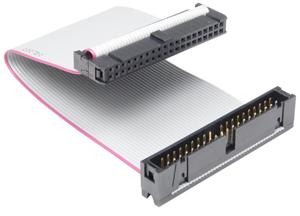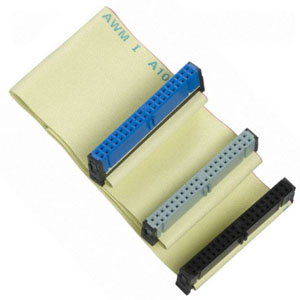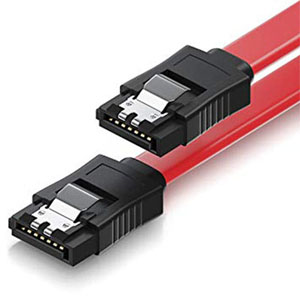Table of Content
- IDE / ATA
- EIDE / ATA2
- Ultra ATA / Ultra DMA
- SCSI (Small Computer Systems Interface)
- Serial Storage Architecture (SSA)
- Fibre Channel
- Serial ATA
- Storage Area Network (SAN) / Network Attached Storage (NAS)
IDE / ATA
- Electronic controller card built into the hard drive itself
- Two channels with a maximum of two disk drives per channel (one designated as Master and the other as Slave)
- Uses 40-pin cable
- LImited to 18 inches in cable length, using parallel data transfer

EIDE / ATA2
- Same general layout of IDE, but can achieve faster data transfer rates due to increases in technology
Ultra ATA / Ultra DMA
- Improves performance by using Direct Memory Access (DMA) to allow the drive to access main memory without involving the processor
- Connector heads for Ultra ATA cables are typically in blue to distinguish it from a IDE/EIDE cable

SCSI (Small Computer Systems Interface)
- Pronounced "skuzzy"
- More flexible and efficient
- More devices can be connected; externally or internally
- SCSI devices needing to transfer data between itself can be handled by SCSI controller, the CPU need not be involved
- Uses a host adapter to improve performance and allow more devices to connect both internally and externally
- Both ends of the SCSI chain must be terminated
- Three main standards
- SCSI-1 (aka Narrow SCSI)
- Adopted in 1984
- 8-bit wide bus
- 5Mbps transfer rate
- 7 devices can be attached to the same cable
- 6 meter maximum cable length
- SCSI-2
- Adopted in 1994
- 8- (Fast SCSI -2) and 16-bit (Wide SCSI-2) bus
- 20Mbps transfer rate
- 15 devices can be attached to the same cable
- 25 meter maximum cable length
- SCSI-3 (aka Ultra SCSI)
- Adopted in 1998
- 16-bit wide bus
- 300+Mbps transfer rate
- 15 devices can be attached to the same cable
- 25 meter maximum cable length
- Ultra3 Wide SCSI
- 16-bit wide bus
- 80 MB/s
- 15 devices can be attached to the same cable
- 25 meter maximum cable length
- Ultra3 SCSI (aka, Ultra-160, Fast-80 Wide)
- 16-bit wide bus
- 160 MB/s
- 15 devices can be attached to the same cable
- SCSI-1 (aka Narrow SCSI)
Serial Storage Architecture (SSA)
- Invented in 1990 by IBM
- Can support 192 hot swappable drives
- Supports full-duplex communication at over 40Mbps per channel
- Replaced by Fibre Channel
Fibre Channel
- Introduced in 1988
- Allows hundreds of devices to be connected through a loop
- Original version had data transfer rate of 12.5 Mbps
- 128GFC "Gen6" introduced in 2016 offers data transfer rate of 12.8 Gbps
- Active development expected to continue through 2022
Serial ATA
- Uses 4 wires to carry a serial (one bit at a time) signal through the cable. This allow for more flexibility and longer cables as well as faster data transfer
- Data cable is 7-pin
- Generations:
- SATA/150 (aka SATA1) - first generation, 1.5 Gb/s
- SATA/300 - 3.0 Gb/s

Storage Area Network (SAN) / Network Attached Storage (NAS)
- Use the network and even the Internet to access data that is stored for the client in large "server farms"

